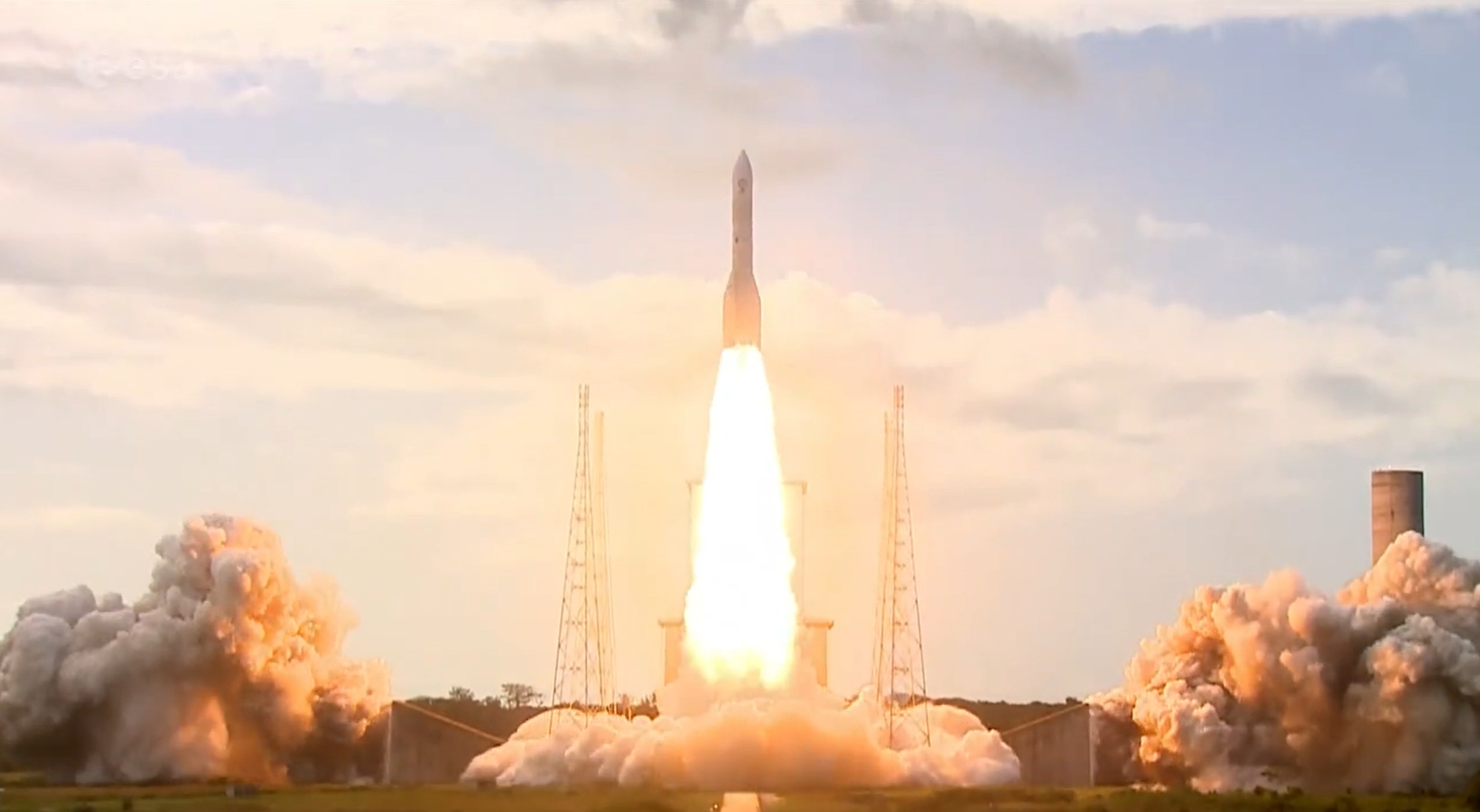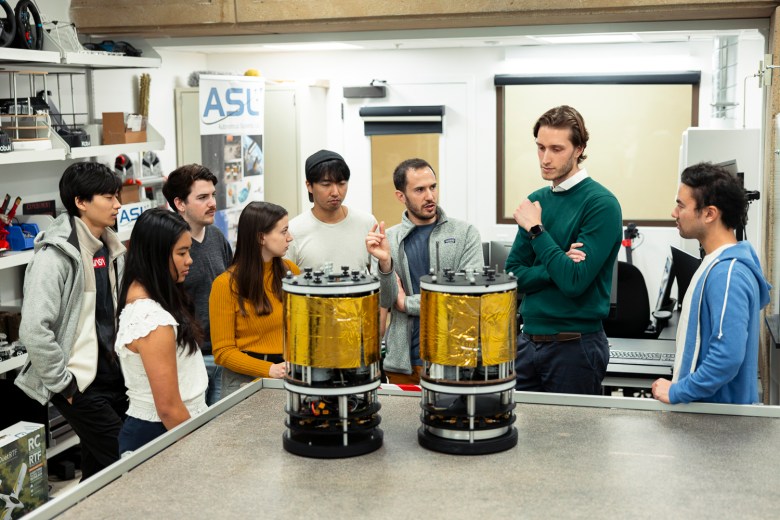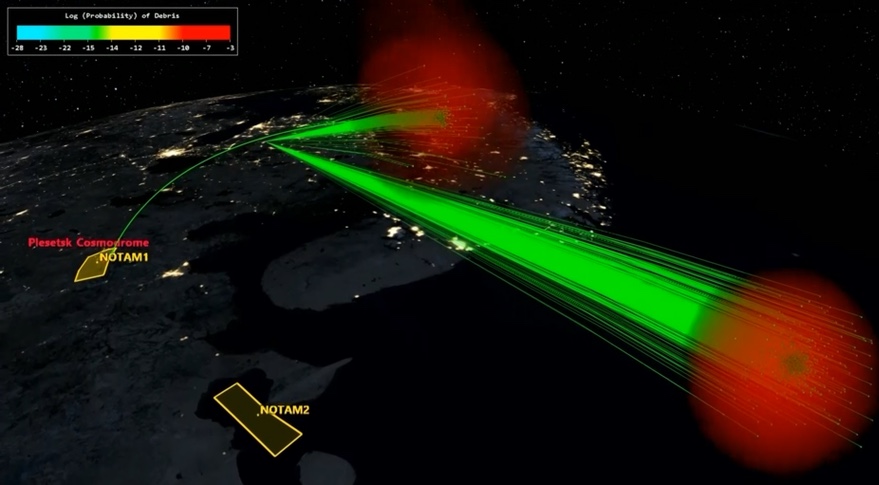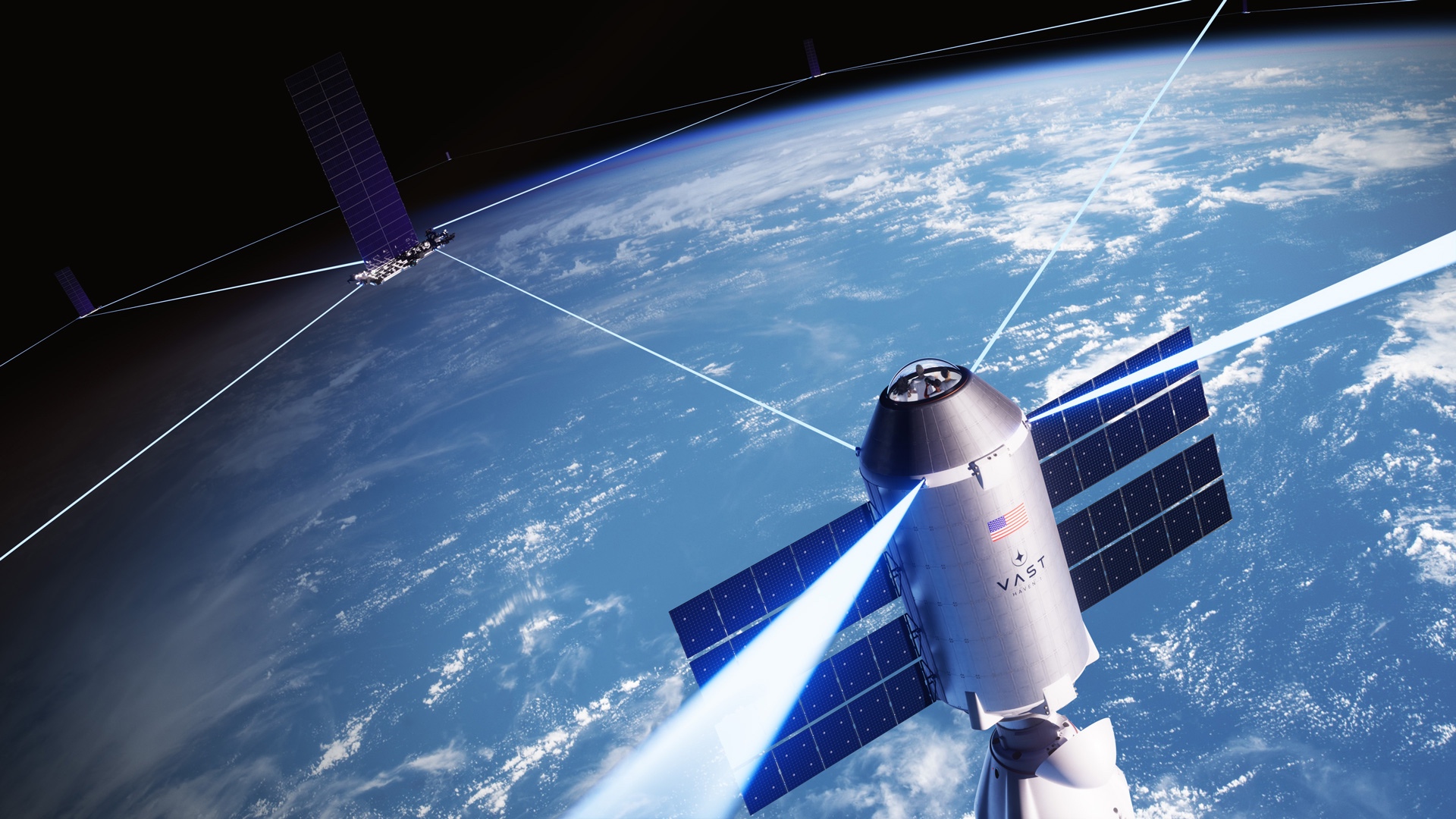HELSINKI — Europe’s Ariane 6 rocket launched for the first time Tuesday, providing a big boost for the continent’s space plans.
The Ariane 6 rocket lifted off from the Kourou launch site in French Guiana at 3:01 p.m. Eastern (1901 UTC) July 9. Launch followed a short delay due to a data acquisition system issue.
The rocket’s pair of solid boosters separated just over two minutes into the flight at an altitude of 62 kilometers. The main stage’s new liquid hydrogen and oxygen-fuelled Vulcain 2.1 engine cutoff as planned just under eight minutes after liftoff.
The first separation command, seeing the deployment of the OOV-Cube, Curium One and Robusta-3A, took place one hour five minutes into flight with the Ariane 6 upper stage in a circular, 577-kilometer-altitude orbit. Experiments YPSat and Peregrinus, attached to the upper stage, were also initiated.
Three further separations were due to follow at time of first reporting. The European Space Agency official stream later reported an issue with the Auxiliary Power Unit (APU) which allows the upper stage Vinci engine to reignite*.
The issue is only expected to affect the end of the mission, according to ESA. A first passivation maneuver of the upper stage was planned for two hours 40 minutes into the flight. The agency announced a press conference to follow at 6:30 p.m. Eastern. The final release was intended to see capsules reenter the atmosphere and fall into the Pacific Ocean as part of the deorbit maneuver.
“This is just the first step,” Josef Aschbacher, director general of ESA, said on X ahead of launch. “We have lots of work to do yet, but we are laser-focused on changing the future of the European space transportation ecosystem.”
The flight was a crucial moment for prime contractor ArianeGroup and launch service provider Arianespace, which has an order book of 30 launches. The launcher is also crucial to fulfilling European Space Agency (ESA) and European Union missions.
The nominal mission now clears the way for a range of civilian, defense and security-related, and commercial missions. It also reestablishes access to space for Europe following delays that saw the first launch follow, rather than precede, the retirement of the Ariane 5.
“Ariane 6 is essential and a prerequisite for the implementation of a broader European space policy and strategy,” Hermann Ludwig Moeller, director of the European Space Policy Institute, told SpaceNews.
Moeller said that, following the July 9 launch, the “focus in Europe needs to shift beyond launchers to the accelerated use of space, in all domains and to the benefit of the entire European economy, for the prosperity of its citizens, the competitiveness of its industries, as well as for the protection of global peace and inspiration of future generations.”
“Europe needs to double its investment in space by 2040, otherwise it risks becoming a middle power, junior partner and being marginalized next to the existing powers—the US and China—and newly emerging space powers, including India,” Moeller stated.
The inaugural flight used the 56-meter-long ’62’ Ariane 6 variant with two solid boosters. The 62 can carry up to 10.3 tons to low Earth orbit, while the larger “64” featuring four solid boosters can lift up to 21.6 tons.
The first launch follows years of delays. The expendable launcher is designed to succeed the venerable and now-retired Ariane 5 while reducing cost through new technologies including friction stir welding and additive manufacturing.
Development of the rocket began in 2014 and had earlier been targeted to fly for the first time in 2020.
ArianeGroup aims to ramp up production of the Ariane 6 to reach a launch cadence of around nine launches per year.
—
Edited at 5:57 p.m. Eastern: Title changed from “Ariane 6 performs flawlessly on long-awaited first flight” following issue with Auxiliary Power Unit. *Article also updated with details of APU issue.



